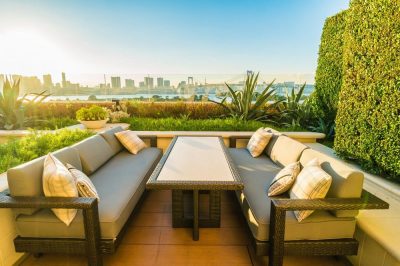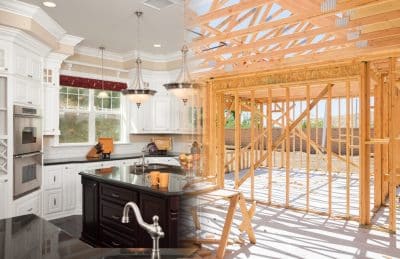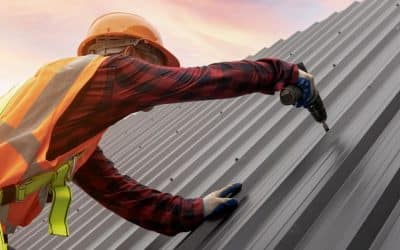
Today’s architectural landscape sees a resurgence, in adapting building styles to meet needs and preferences instead of relying solely upon modern skyscrapers and simplistic residences that are pervasive today. Many individuals are drawn to distinctive forms for innovative ideas rather than opting for the typical minimalist designs seen in urban settings. These older architectural styles not only offer allure but also provide practical and sustainable solutions for modern living requirements. From igloos to bungalows and other historical structures have found their way, into present-day architecture while maintaining their charm and functionality.
Igloos: The Marvel of Cold Climate Adaptation
The igloo stands out as a display of architectural ingenuity and resilience, against harsh environments. Built by the Inuit people using blocks of snow and ice to shield against weather conditions these traditional structures showcase their simplicity and remarkable efficiency by effectively retaining heat within which makes them perfect shelters, for icy climates. In architecture today the idea of igloos continues to inspire designs and concepts. Designers have used their creativity to transform dome-shaped homes into energy-sustainable living spaces using materials, like glass and concrete well as eco-friendly plastics reminiscent of igloos in harmony, with nature while offering modern-day comforts and conveniences. A blend of ancient architectural wisdom adapted for today’s environmentally conscious lifestyle choices.
One striking illustration of this is the Eco Dome idea, where architects have utilized the structure to construct friendly residences that maintain air quality naturally and require less energy, for heating while providing a distinct aesthetic appeal—an intriguing blend of traditional and modern architectural styles that spans generations.
Adobe Houses, with a Touch of Modernity
Adobe houses have been utilized for years, in arid areas, like the Southwestern United States or North Africa to regulate temperature effectively throughout the day and night with their thick walls serving as excellent natural insulation—a design element that architects still admire and incorporate in modern times.
Lately, architects have been revamping adobe homes using methods and modern amenities, like solar panels, energy-efficient windows, and eco-friendly roofing systems. One of the reasons these homes are attractive is their connection, to the earth. The modern interpretations of adobe homes emphasize incorporating the surroundings into the design making them not environmentally friendly but also culturally fitting places to live in.
Adobe homes that have been updated still hold on to the charm of the past while also providing a mix of conveniences. Proving that old fashioned building techniques can align with contemporary environmental requirements.
18th-Century Houses: Blending History with Modern Living
These historic properties are not only worth visiting but are also prime examples of how classic architecture can be adapted to fit contemporary styles. The original craftsmanship, like intricate woodwork and stone facades, blends seamlessly with modern amenities like smart home technology, eco-friendly materials, and open floor plans. In Frenchtown, for instance, homeowners are preserving the historic charm of these 18th-century houses while updating them with contemporary conveniences, making them both functional and timeless. This blend of old and new is perfect for those who appreciate heritage but want a home that’s suited for modern living. These unique properties add character to cute towns in NJ, making them great places to consider buying. One example of this beautiful architecture can be found in Frenchtown, New Jersey, which boasts stunning 18th-century homes. This is a great example of how long-standing history and its architecture harmonize with modern adaptations, where original craftsmanship meets contemporary convenience. There are many charming towns in NJ that capture this blend of the past and present. From quaint streets lined with historic homes to modern amenities tucked into timeless architecture, these towns offer a unique opportunity to experience both heritage and modern living. Whether you’re exploring picturesque neighborhoods or considering buying a home, these locations provide a seamless fusion of old-world charm and 21st-century comfort.
Yurts as a Circular Comfort Meets Contemporary Style
The nomads of Central Asia have long relied upon yurts, as their homes. Easily movable structures that blend durability with comfort and mobility in a remarkable way. The original construction of yurts involved frames covered with felt or animal hides to create a sturdy shelter capable of withstanding harsh weather conditions.
The round shape of the yurt has inspired architects to create eco-friendly houses that feature sustainable materials and modern amenities, like plumbing and electricity. Thanks to its design allows for airflow circulation within the homes and effective insulation methods utilized in construction processes. These modern yurts require the use of heating or cooling systems. They cater to those seeking a lifestyle closer, to nature’s embrace.
Yurts have become increasingly popular, for ecotourism as they offer an eco-friendly accommodation option for travelers looking to immerse themselves in nature during their journeys! The rise of yurts in architecture speaks volumes about the growing demand, for environmentally sustainable living spaces that cater to modern needs while drawing inspiration from traditional architectural concepts.
Barn Conversions
Barn structures that were traditionally utilized for farming functions are currently undergoing a metamorphosis into residences that showcase the allure of architecture. The lofty ceilings featuring beams and expansive open layouts characteristic of barn structures offer an ideal foundation, for contemporary upgrades enabling these spaces to seamlessly evolve into chic modern homes while retaining their rustic appeal.
Many designers are incorporating the layout of a barn, into their designs. Updating it with contemporary features like expansive windows and eco-friendly materials for insulation and stylish touches for a polished look. The blend of elements with modern design creates a unique style that appeals to buyers seeking a mix of tradition and innovation, in their living spaces.
Renovating barns, for living is an option since you can repurpose a lot of the original materials during the process. Not only does it cut down on waste but it also adds character to the home, with its history preserved while incorporating modern elements.
The Convergence of History and Contemporary Times
One common pattern that frequently arises is the reinterpretation of architectural styles—an indication that these design approaches have consistently remained popular over time. The enduring appeal of structures, like igloos, for their efficiency. Bungalows for their layouts highlights how valuable lessons can be gleaned from historical architectural practices. By adapting and integrating these age concepts into living environments result in spaces that are not only functional but also imbued with deep historical significance and significance as we move forward in time.
Conclusion
Henceforth in architecture has provided a means to preserve the essence of architectural examples while infusing them with modern technology and sustainable design elements without compromising style or functionality. This fusion of contemporary design allows us to dwell in residences that honor our roots while embracing the advancements of tomorrow.
By reinventing timeless styles and traditions, in architecture today we honor the creativity and skill of artisans from eras while also building living spaces that encourage and motivate us in present day life endeavors. Check out the linked guide for insights into the influence of classical architecture, on contemporary lifestyles.








